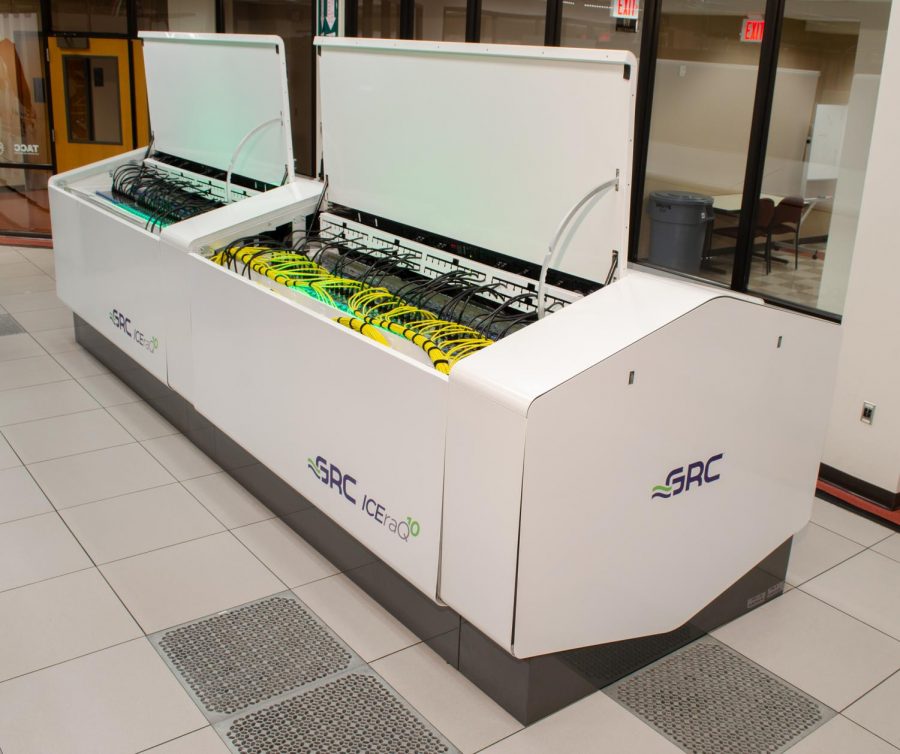Researchers from 13 universities across Canada and the U.S. have gathered at UT’s J.J. Pickle Research Campus this summer to conduct the U.S.’ largest indoor air quality experiment to date.
On June 1, scientists began the four-week experiment to measure the chemicals in the air of the UTest House, a prefabricated, typical three-bedroom home, during various cooking and cleaning exercises.
“The focus is on the chemistry of the indoor environment,” said Lea Hildebrandt Ruiz, a chemical engineering assistant professor at UT.
The one-story UTest House sits in a field at the Pickle Campus, surrounded by trailers and the occasional teflon tube. The tubes assess the chemistry of the outside atmosphere as a control, sucking air into the tiny trailers housing bulky machines.
“A variety of experiments are being conducted to understand the effect of activities on the quality of air in the house,” said Kanan Patel, a graduate research assistant in Hildebrandt Ruiz’s laboratory. “(Such as) cooking, cleaning, the number of people in the house, the kind of personal care products being used, etc.”
The dining room appears normal except for a mass spectrometer — a machine that identifies chemicals in a sample by measuring their masses — sitting on a plastic table against the wall.
“It’s a house someone could have lived in,” Hildebrandt Ruiz said. “We have a table and chairs in the dining room area, because we are having (meals) there. But we don’t have any beds, we don’t have any couches. … We think those would affect indoor chemistry.”
Half of the kitchen countertop appears to be completely ordinary, but past the fridge and the stove are more machines taking measurements and hoards of teflon tubes sucking in air to bring to the instruments in the trailers.
“(Our mass spectrometer) pulls in air, and we have a metal line (and a teflon line) from the instrument into the house,” Hildebrandt Ruiz said. “The instrument ionizes the molecules, and then measures how long it takes for the molecules to travel through. … This travel time depends on the molecule’s mass.”
Each group on the project is measuring something different: ozone, air particles, organic molecules, carbon dioxide, living microbes, chlorine-containing compounds from cleaning supplies and more.
“To some extent, we’re not sure what we’re going to see,” Hildebrandt Ruiz said. “Having been in the field for a while, … we can make some guesses, but the work is fundamentally quite exploratory.”
Sometimes, the researchers mimic an ordinary day by cooking three meals and cleaning up after each, Hildebrandt Ruiz said. But other times, researchers may cook the same dish repeatedly, clean the same space several times using different products or even simulate Thanksgiving dinners.
“We’ve done things like cook (a meal) on an electric stove and then a gas stove,” Hildebrandt said. “And we can see clear differences there.”
Small changes such as opening windows, mowing the lawn, letting in more sunlight to react with the chemicals indoors or heating the stove a few degrees could dramatically change their measurements.
“The ultimate goal of our research is to enable better-informed environmental policy decisions aimed at improving air quality and human health,” Patel said.
The sheer size and intensity of the project is unprecedented. The variety of mass spectrometers collecting data every second, the dozens of workers and the repetition of experiments are all intended to provide comprehensive data on the house’s indoor air chemistry.
“This study is the first of its kind,” Hildebrandt Ruiz said. “The house is a unique resource to study indoor air.”




















